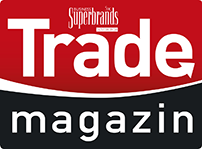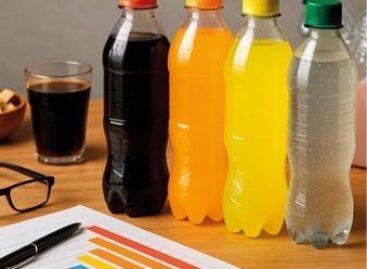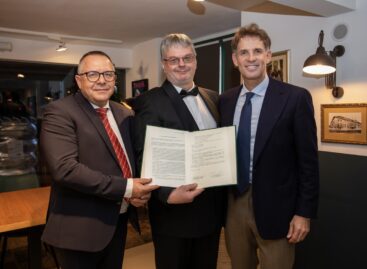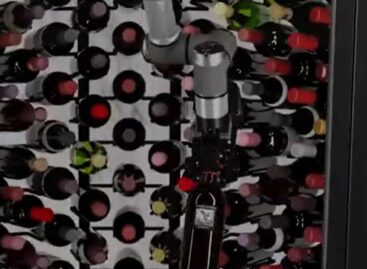With a clear head
According to international research by Oxford University and Heineken, published in February, the perception of non-alcoholic drinks has improved significantly over the past five years, with one in five consumers now making them their default or regular choice.

This article is available for reading in Trade magazin 2025/4.
The survey was conducted with the participation of nearly 12,000 adults in the UK, Spain, Japan, the US and Brazil, and it found that the change is substantial and profound, particularly among young people. Acceptance of drinking non-alcoholic beverages was highest among women and members of Generation Y on all the markets surveyed, for instance 40% of Generation Y opt for low-alcohol or non-alcoholic options on weekend nights out with friends.
Well-established and new brands

Attila Piri
marketing director
Heinemann Testvérek
“In Hungary the market is small and the trend is only just beginning, but it is growing and expanding with new players”,
analyses Attila Piri, marketing director of Heinemann.
In Budapest zero alcohols are already present, especially in top HoReCa outlets, restaurants and bars. In line with international trends, Heinemann is expanding its portfolio this year: they are introducing more zero alcohol product lines and brands to the Hungarian market. Sober Spirits – the world’s first zero alcohol product range made from a genuine base product by extracting the ethanol from the alcohol – is now available from Heinemann in rum, gin, whisky, bitters and amaretto versions. Undone is Germany’s leading zero alcohol brand, which also extracts alcohol from real base spirit and then completes the final flavour by redistillation. It is available from Heinemann in rum, gin, whisky, agave/mescal, aperol, bitter and vermouth variants.

Dávid Gábor Kovács
marketing director
Zwack
“In recent years the Hungarian market of no-low alcohol products has been growing rapidly, backed by changing consumption habits and increased interest in conscious living. We see sales getting 2-3 times bigger in some categories every year”,
says Dávid Gábor Kovács, marketing director of Zwack.
In Zwack’s portfolio non-alcoholic Tanqueray 0.0% is based on the same four quality herbs as the classic Tanqueray gin. It has attracted a lot of interest and attention since its launch last year, and can be found on the shelves of more and more HoReCa outlets and retail chains.
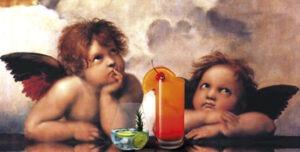
Innovative products have been transforming the dating culture
Mocktail culture
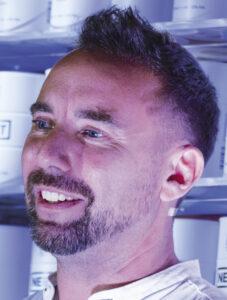
András Tripolszky
commercial director
Dunapro
“No-low products are purchased both by bars – for non-alcoholic cocktail variations for their guests – and by the few people who already know this segment and like to make these drinks themselves at home or with friends”,
informs András Tripolszky, commercial director of Dunapro.

Péter Bárány
owner
Grand Spirit
“We have been developing our non-alcoholic products for months, so that by the beginning of summer 2025 we will be able to offer a non-alcoholic alternative of both our gins, Búzavirág and Zsolnay”,
adds Péter Bárány, the owner of Grand Spirit.
In his view it is true that the domestic market for no-low products is small, but it is a very dynamic category – in part due to the consumption habits of the alpha and Z generations.

Dr. László Pálffy
owner
Mobilkoktél
“In Hungary we can’t talk about a cocktail culture that is 50-100 years old, and the trend for non-alcoholic spirits and no-low cocktails (i.e. mocktails) is linked to quality bars. Most modern cocktail bars have a substantial non-alcoholic offering. Non-alcoholic spirits are mainly available in speciality drinks shops”,
we learn from Dr László Pálffy, the owner of Mobilkoktél.
Sobriety calling

Iván Takács
managing director
Eckberg Minőségi Ital
“Both the non-alcoholic versions of well-known brands and new non-alcoholic brands have their raison d’être. However, even the non-alcoholic versions of the established brands can become boring after a while, which is why we can see a growing interest in new non-alcoholic brands, especially if they can stand out with exciting, well-constructed flavours and premium quality”,
explains Iván Takács, managing director of Eckberg Minőségi Ital Kft.
Eckberg distributes the Abstinence range of non-alcoholic products, imported from South Africa – non-alcoholic gin, whisky and rum, plus an Aperol Spritz alternative. Generation Z is an age group that seems to be going out less, drinking less alcohol. A complex, barrel-aged no-low drink can be really enjoyable neat, but most non-alcoholic spirits work well as a cocktail base. The market is increasingly differentiating between premium and mass-produced drinks. Premium products are often made from natural ingredients, while cheaper ones rely on artificial flavours. Pricing is a key issue, as higher prices may discourage consumers.
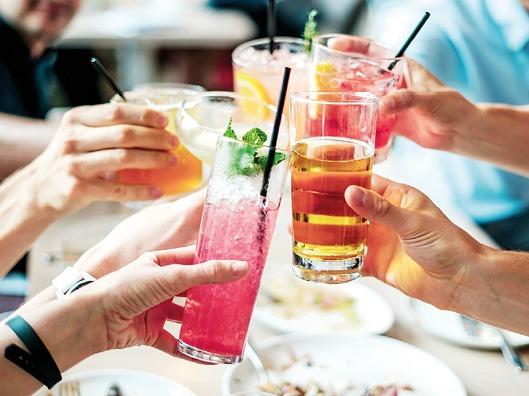
In principle, non-alcoholic spirits can be consumed on their own, but they are mainly developed for cocktails
Educating consumers is a must
Well-known brands not only have the advantage of consumers trusting them, but also being associated with the nature of the drink. According to the regulations, products can’t be labelled as non-alcoholic “gin” or called gin-flavoured, so it is difficult to communicate a new no-low brand. Non-alcoholic spirits have an expiry date of one year from production, and even the biggest brands are only experimenting with extending this date. In many cases manufacturers are also reproducing the “burning” or “warming” effect of alcohol, with the help of chilli, ginger, pepper and similar spices. A big advantage of no-alcohol spirits is their complex flavour and very low or zero sugar content. Non-alcoholic spirits really show their true character when mixed into drinks. //
Zebra drinking
Zebra drinking – a term that originated in the United Kingdom – is when a person alternates between alcoholic and non-alcoholic drinks, typically practiced by younger consumers, especially at longer social events: they behave responsibly, but don’t give up drinking completely.
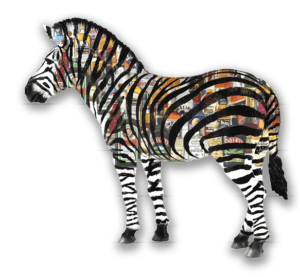
These days the focus of social life is shifting from being alcohol-centred to activity-based, and drinking less alcohol isn’t about cutting back on fun. According to a recent survey, more than a quarter of consumers in the UK are zebra drinking. This also creates a good opportunity for distributors of non-alcoholic brands to expand: they can make their products more attractive and accessible to both existing and new consumers. //
Related news
Rapid changes, adaptive path
🎧 Hallgasd a cikket: Lejátszás Szünet Folytatás Leállítás Nyelv: Auto…
Read more >After an exclusive dinner at Unicum House, the beck@grecsó duo will treat their fans to a signed album
🎧 Hallgasd a cikket: Lejátszás Szünet Folytatás Leállítás Nyelv: Auto…
Read more >Treasures of the past are revealed: Zwack and the Hungarian National Archives work together to preserve values
🎧 Hallgasd a cikket: Lejátszás Szünet Folytatás Leállítás Nyelv: Auto…
Read more >Related news
Intuition can’t be learned
🎧 Hallgasd a cikket: Lejátszás Szünet Folytatás Leállítás Nyelv: Auto…
Read more >(HU) Palackosbor-vending – A nap videója
🎧 Hallgasd a cikket: Lejátszás Szünet Folytatás Leállítás Nyelv: Auto…
Read more >(HU) A lázadók kilőtték a Halálcsillagot – A nap képe
🎧 Hallgasd a cikket: Lejátszás Szünet Folytatás Leállítás Nyelv: Auto…
Read more >